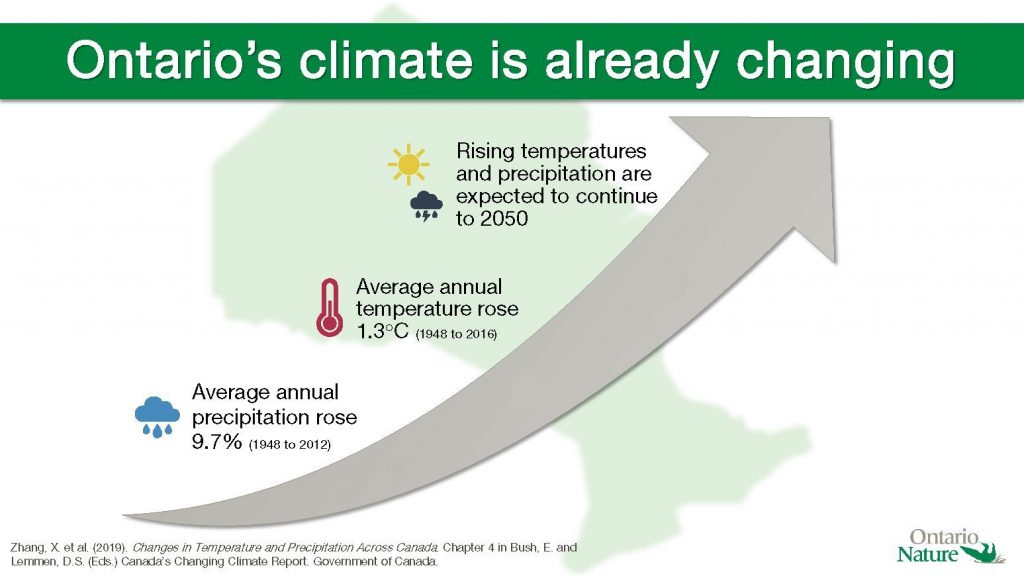Lake Nipissing shoreline wetlands © Vanessa Denov
Wetlands are crucial to addressing the ongoing and related crises of climate change and biodiversity loss. They provide a wide range of functions and values that contribute to climate change mitigation and resilience for the benefit of all life. This primer introduces some of those benefits.
In Ontario and across the world, rising temperatures, shifting weather patterns and more extreme weather events imperil the sources of food, water and shelter that are vital to our survival. Canada’s Changing Climate Report 2019 indicates that Canada is warming twice as quickly as the global average.

Canada has developed several national climate targets and plans, including most recently the Canadian Net-Zero Emissions Accountability Act (2021), which sets out the federal government’s commitment to reduce greenhouse gas emissions by 40 – 45 percent of 2005 levels by 2030 and to achieve net-zero emissions by 2050. As the province with the second highest contribution to Canada’s greenhouse gas emissions since 2005, Ontario has a major role to play in the national climate change mitigation strategy.
The federal government’s pathway to achieving our climate targets is laid out in the 2030 Emissions Reduction Plan. One of the key strategies is to invest in nature-based climate solutions. Simply put, nature-based climate solutions (also called “natural climate solutions”) are actions that protect, manage and/or restore natural ecosystems to promote their climate mitigation and adaptation benefits and protect biodiversity. Not only do these actions help to sequester and store carbon, but they also enhance resilience to climate change impacts such as flooding and drought and provide a suite of additional co-benefits.
Wetland conservation and restoration are widely recognized as an exceptional nature-based climate solution. About 25 percent of Canada’s wetlands occur in Ontario. Accordingly, Ontario has a significant responsibility to conserve and restore these valuable ecosystems.
Our primer summarizes the importance of Ontario’s wetlands in addressing climate change and provides additional resources for those who want to learn more.
1. Carbon Storage Superstars
This webpage highlights how wetlands help to keep carbon out of the atmosphere.
2. Reducing Flood Risk
This webpage highlights how wetlands increase resilience to climate change impacts, particularly by reducing flooding and associated damages.
3. Biodiversity Support Systems
This webpage features how wetlands help wild species adapt to a changing climate.
4. Diving Deeper
This webpage provides resources for those who want to learn more about the climate and biodiversity benefits of wetland conservation.


